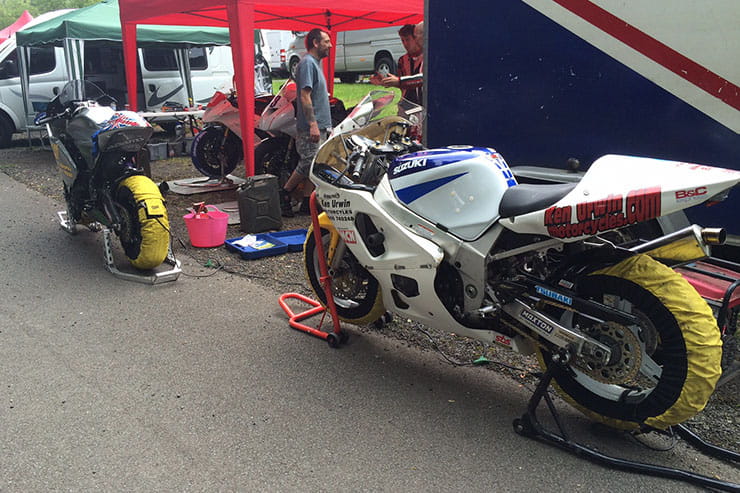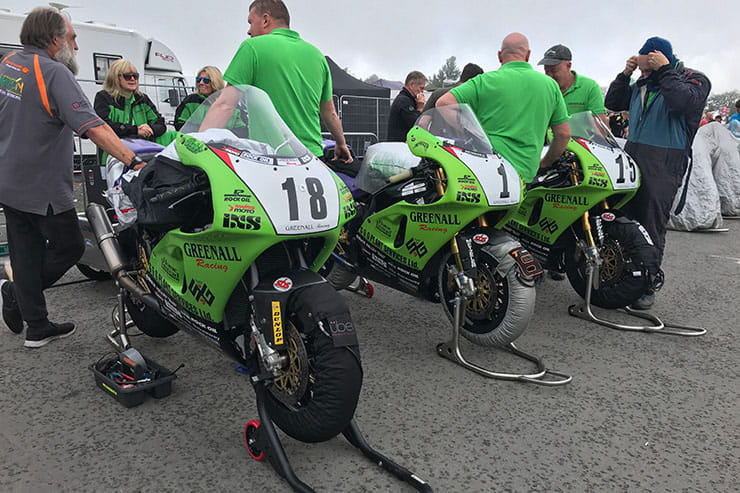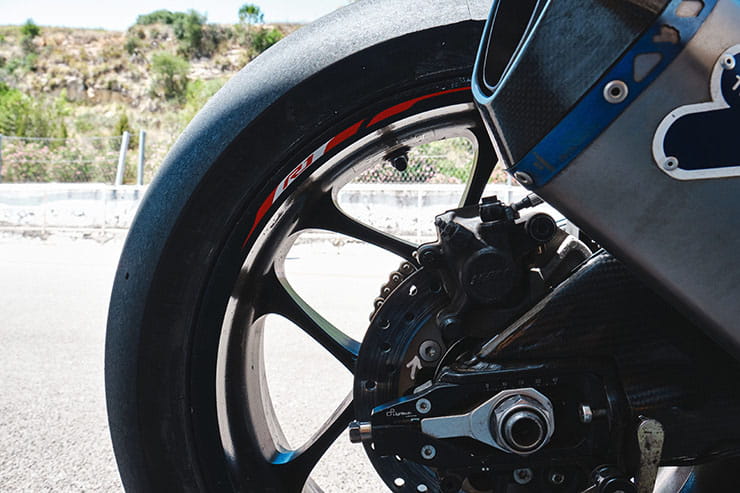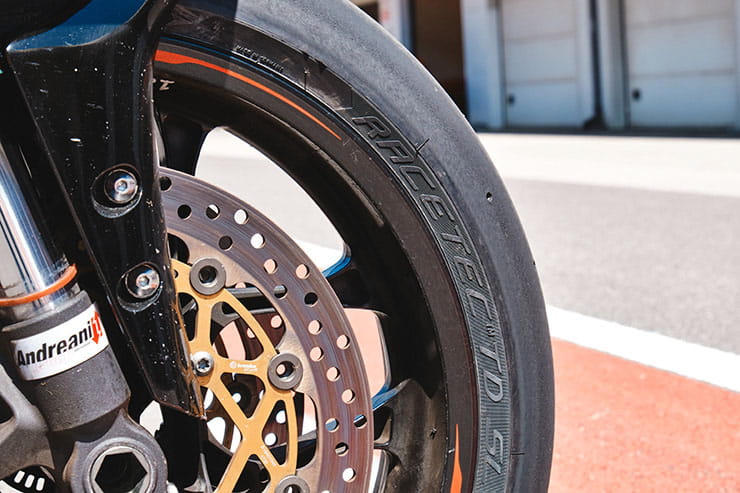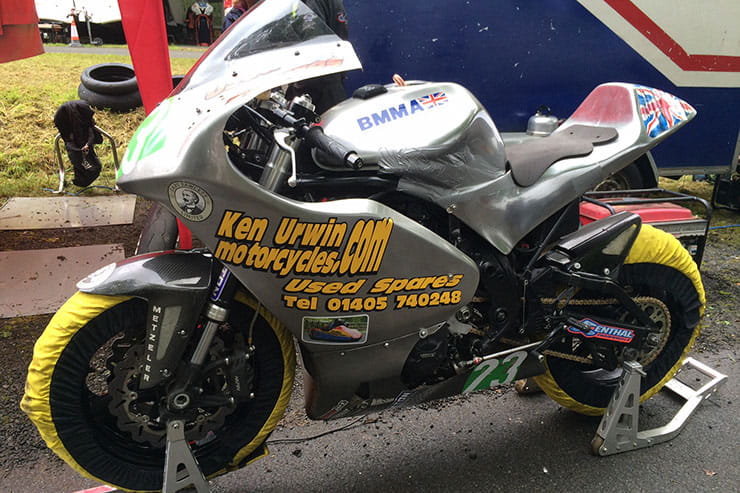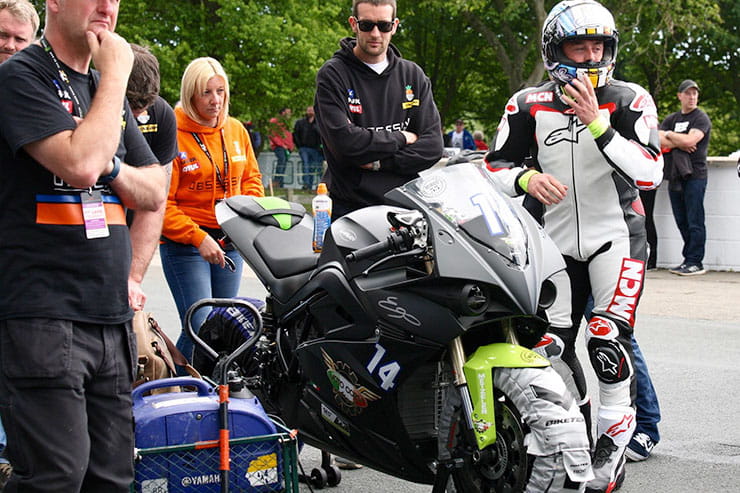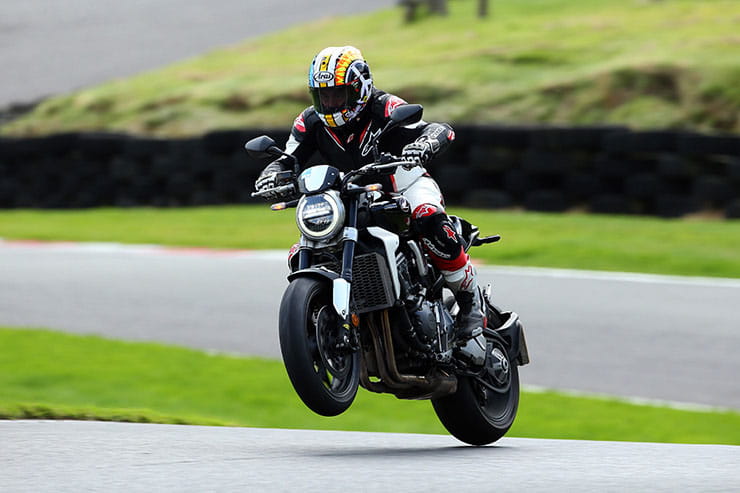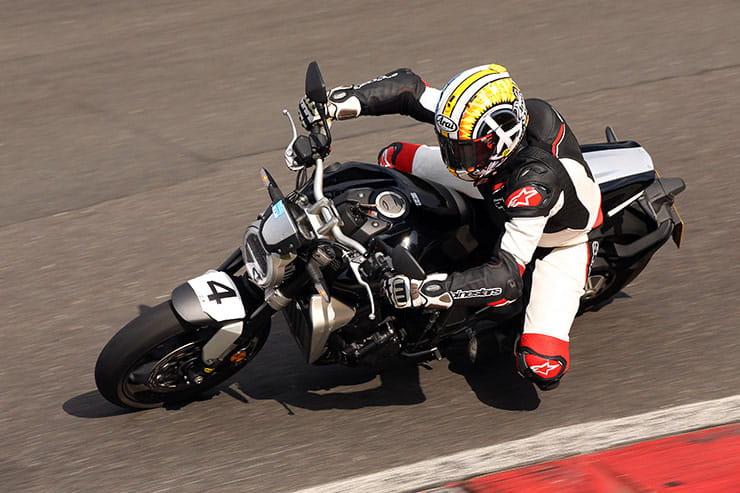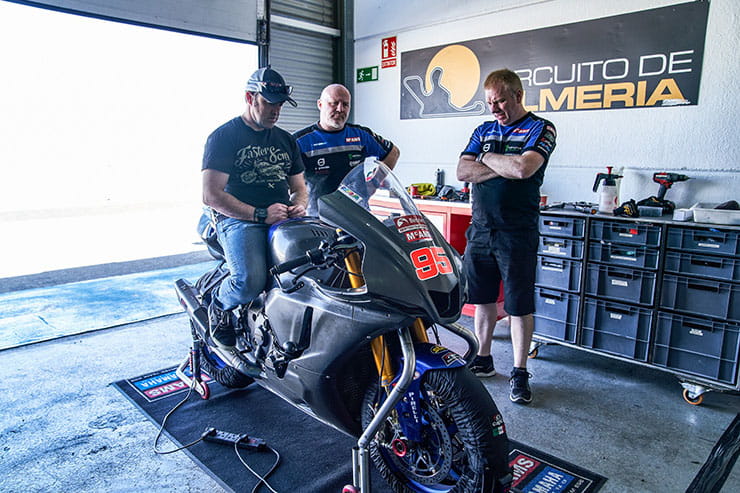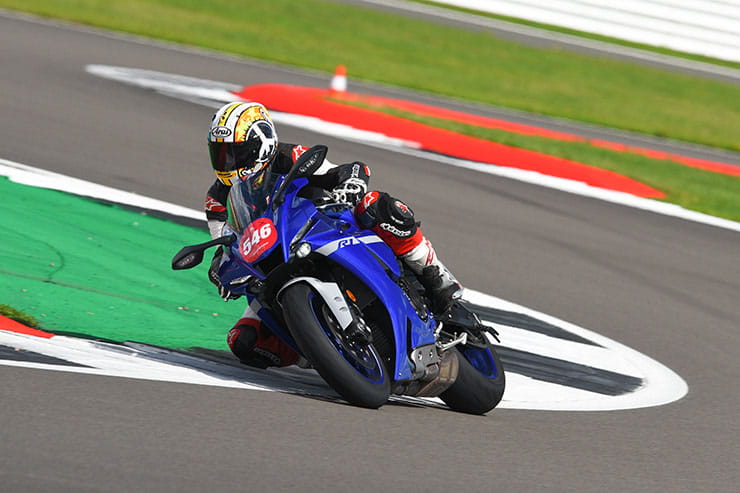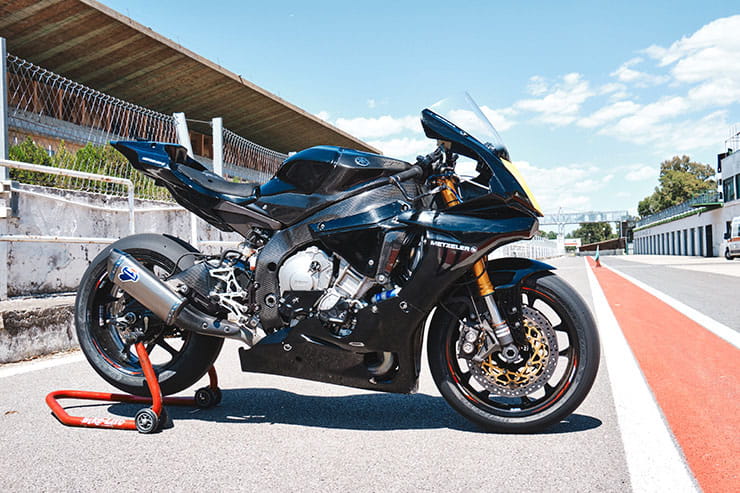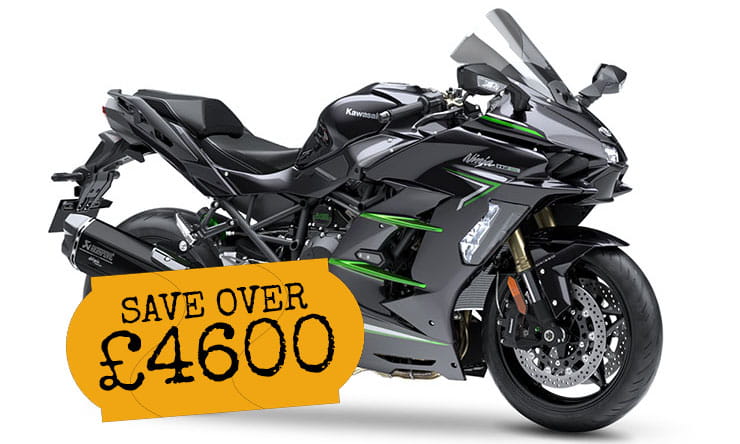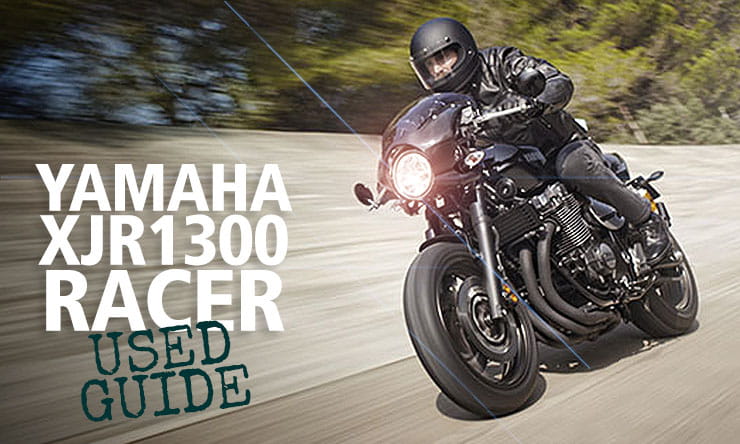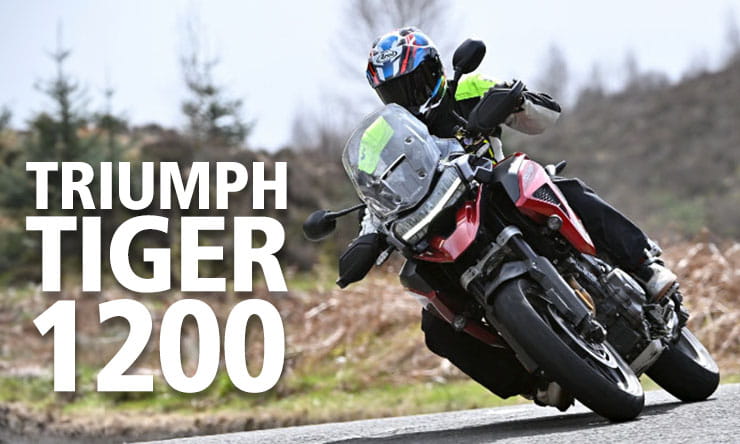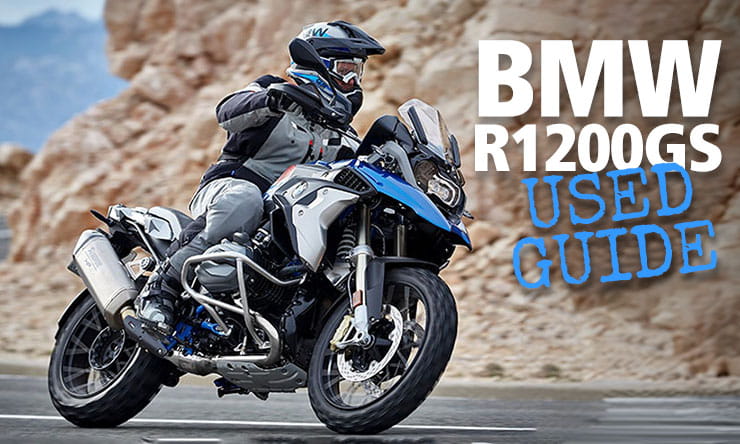Tyre warmers… Whether you should or should not use them is a huge talking point in trackday circles. There are so many questions and opinions: Do you need them? How do you use them correctly? And what are the advantages of using them? I’ve witnessed trackday and club racers using them incorrectly, and seen riders not bother with tyres warmers when they really should. So, we thought it was about time we set the record straight and answered some of the most common questions about these mysterious rubber heaters. Don’t worry, we are not going to get too technical, but even those who are regular club racers or trackday enthusiasts might like to pin their ears back…
To keep things simple, we are going to split this feature into sections. First, we’ll look at how to use tyre warmer and what they do. Then we will look at how to fit and remove them, plus some simple tips that will make you look like a professional in the paddock.
How do you use tyre warmers?
Tyre warmers pre-heat your bike’s tyres so you can ride hard from the start – it is that simple. In racing you don’t have the time – or enough warm-up laps – to warm up the tyres as you might at a trackday. Instead, you have to be quick into the first corner, and tyre warmers ensure your rubber is at racing temperature when you arrive. There are many obvious and not so obvious advantages to this:
You can ride into turn one with confidence on pre-heated race rubber (once scrubbed).
A cold race tyre will feel dreadful, because the pressures won’t be correct (tyre pressure increases as heat is developed). Salvo Pennisi Head of Motorcycle Testing at Pirelli told us, “Pressures can change between four and six psi depending on the ambient temperature.”
A pre-heated tyre will last longer and won’t experience cold tear.
Grip should remain consistent because the temperature remains consistent.
A correctly heated race tyre will give more grip, feel and confidence allowing you to lap safer and more consistently, which should equate to a faster lap time.
Which tyres need warmers?
All tyres work better with some heat, even road/touring tyres. Some road tyres are designed to work in cold conditions, therefore tyre warmers are not needed, but gently pre-heating road and sporty road tyres is an advantage. We spoke to Garry Hartshorne, Bridgestone Senior Product Manager, North Europe. “There is an advantage to using tyre warmers on road tyres as long as you can set the temperature on the warmers low enough: around 50-60 degrees on road tyres. You shouldn’t bake road tyres to 80 degrees like you do slicks.”
Some slicks, like Metzeler Racetec TDs, don’t require tyre warmers, but race slicks need to be pre-heated, and some more than others. In fact, some slicks simply won’t work when cold and must have tyre warmers, many needing to be baked so they are almost too hot to touch. It all depends on the type of slick. When purchasing a slick or race tyre, consult your dealer not only for recommended pressures but also for the correct tyre warmer temperatures.
How hot is hot?
There is no golden rule, each tyre is different. Some road tyres will benefit from being pre-heated but don’t over-bake them as they might overheat on track. A heavy bike, ridden hard on track will soon overheat its tyres, and this will be visible on the tread.
Race tyre temperatures vary from 60-90 degrees. But we don’t all have a tyre temperature gun, therefore we usually use touch. Now, this is where most people make mistakes. The surface of the tyre may be warm, but the carcass and the wheel might still be cold. Don’t just put your hand on the tyre! Feel the actual wheel: is the rim warm?
In perfect conditions, the wheel should be nice and warm and the surface of the tyre almost too hot to touch – tyre dependant. At a professional level, it is important to control the tyre temperature, but time is not an issue. “If the heating cycle is inside the temperature prescriptions, around 80-90 degrees, there is no particular limit, in terms of time,” says Salvo Pennisi.
In the UK, weather can be an issue as most slick tyres won’t perform properly below 10 degrees. Garry at Bridgestone says: “Slicks will still work at low temperatures but they won't work correctly and you are better with a treaded sporty tyre like a Bridgestone R11 or Bridgestone S22.”
Crucially, once a race tyre is pre-heated you must be able to maintain this heat in the tyre. Many years ago I rode a race bike in November, on pre-heated race slicks. I didn’t ride hard enough, the tyre temperature dropped, which meant the grip was reduced, and the pressures reduced. I then went slower, because the grip was reducing, and eventually crashed – a valuable lesson learned. If you can’t maintain the heat in the tyres, then try a different tyre, like a soft-compound treaded trackday tyre, or a sporty road tyre that has a operating temperature range for lower temps.
“Minimum temperature depends on many aspects,” says Salvo Pennisi. “Track temperature is important as it affects heat build-up. If the compound does not reach its proper working range of 80-90 degrees then many problems can appear like tearing, unforeseen sliding, and so on. Compound heat build-up is affected also by asphalt roughness, lap times, bike set up, rider style and many other factors. For example, in Assen in WSBK with just six degrees of track temp, we ran with SCO slicks, but this was with a professional rider. With TD slicks, with an amateur rider, we would say around 10 degrees is the minimum track temperature.”
Tyre warmers are also important when it is warm. In the middle of summer, the sun alone is not strong enough to bring race slicks to the correct temperature (remember the rule: the wheel must be warm and rubber almost too hot to grab hold off). Even at trackdays in Spain use tyre warmers to get them to the correct recommended temperature.
A top tip that is often forgotten is to put your tyres back on the warmers as soon as you get back to the pits because race slicks don’t like cooling down, then warming back up again repeatedly, while some dedicated race slicks only have a permitted amount of heat cycles, from cold to hot and back down again.
Once you have your race tyres to the correct temperature, try to maintain this by keeping the warmers on over lunch, but don’t overcook them. Most tyres warmers will have a thermostat or temperate gauge to control the temperature. Also, at the end of the day, just lay the tyre warmers over the tyres but turned off. Let the slicks cool down gradually, it will give better performance and longevity.
How to fit motorcycle tyre warmers?
This may seem obvious, but I’ve seen it done wrong, with bikes falling over, tyre warmers on fire… You are going to need a front and rear paddock stand, a way to lift the bike, tyre warmers, and some power (generator or plug-in).
- Before lifting the bike onto its paddock stands, plan. How far are you away from power? Will the cable reach? (I’ve done this; got the bike on paddock stands, wrapped the tyre, and then realised I was too far away from a power socket!) Also, check the gradient: is it level? Will the bike topple left or right, roll up or down hill? Remember, paddock stands don’t’ have brakes. Finally, what is the ground like? I grew up road racing where the paddock was usually a grassy field, so we used old wooden doors to stop the paddock stands sinking.
- Now you have a plan, lift the bike onto its stands, starting with the rear. And yes, you can ask for assistance. It can be tricky the first few times, especially the front stand.
- Before applying the warmers makes sure the tyre is clean of debris, particularly stones. Melted rubber is okay, but stones can damage the elements in the tyre warmers, cause burn marks and in extreme situations can cause a fire.
- Is the bike hot? If you are fitting warmers after a track session everything will be hot, discs especially. So take care.
- Start with the front tyre with the warmers still unplugged. Secure the tyre warmer to the wheel on the nearest spoke to the valve. Don’t use the valve as you are going to pull on the tyre warmer to make it tight. Looking at the front of the bike, turn the wheel towards the rear, and feed the tyre warmer around the wheel, making sure it’s tight. When finished you should be back to where you started on the same spoke, and the valve should be clear and easy to get to. It’s important to have the valve near to where the tyre warmers meet, as this makes it easier to check pressures.
- Repeat the same task on the rear. Again, choose a spoke close the valve, and make sure the tyre is clean before introducing the warmer.
- Some tyre warmers have drawstrings on the side to make the warmer snug, so try to keep these neat and away from the chain and brake calipers.
- Final check: make sure there are no bumps, the warmer should be a second skin around the tyre. Once you’re happy, turn them on and make a note of the time. Top tip: write the time and psi on tape and stick that on the warmer where the ends meet as a reminder.
- If you have the facility, set the warmers to the required temperature recommended for the tyres.
- From time to time check the warmers are doing their job. Sometimes the power in the paddock can trip out, or your generator runs out of fuel.
How to remove tyre warmers?
- Before unplugging the warmers, check the tyre pressures. Then make sure you are ready to go out on the track. I see this all the time. On a cold day at Cadwell Park, a rider removes the warmers, drops the front paddock stand, then starts to get ready while casually finishing a brew… Then they go out on track but it’s 15 or 20 minutes since the warmers were removed and the tyre will have cooled significantly. I know it’s not always possible, but try to be ready to go: have your gloves and helmet ready to go, and leave the cup of tea…
- Important: unplug the warmers then remove them. I usually remove the opposite way: rear warmer first, then front warmer. Then drop the front from the paddock stand, then the rear. Above all, don’t panic. Try to be systematic and calm. I’ve seen people fazed under pressure and drop the bike off its paddock stands with the warmers still on.
- Try to avoid removing the warmers from a running motorcycle, sometimes the rear wheel can spin slightly on tickover.
- It is very important that you pack away the warmers correctly. Don’t leave them plugged in as they can sometimes set on fire. And don’t throw them over the fuel cans at the back of the garage. (You can laugh, but I have seen it done.)
- And yes, it is okay to ask for help and advice. Mistakes are easy to make and I’ve seen BSB teams get tyre warmers stuck in a chain on the grid! Pressure does funny things to the most experienced heads.
Some popular questions answered:
Do I need tyre warmers for a trackday?
We have answered some of this above but, to clarify, it depends on the tyre and the trackday. You can ride a road-legal bike on the track, with road or even touring tyres, which is not a problem as long as you’re not going to be pushing lap records on a GS. Race tyres, some slicks, and some dedicated sports trackday tyres will require warmers. They give consistency, stop cold tear, increase the life of the tyre and give grip from the start.
How much confidence can you have as you ride out of pitlane?
If the race tyre is scrubbed, (been used for a few laps to the edges) and has the correct pressure and heat, you can push reasonably hard from lap one. This depends on the conditions, track temperature, and the bike. Riders in BSB are pushing hard from the first corner. Full gas as soon as the lights go green.
How long does it take for tyres to heat up under warmers?
This can depend on the quality of the warmer, and the size of the tyre, but around 50 to 60 minutes. Salvo at Pirelli recommends 50 minutes for uniform heating.
How much power do tyre warmers use?
This depends on the quality of warmers, but most tracks will have plug-in power. Failing that, a small generator will run a set of warmers – but if you are also running a kettle, a hairdryer and tyre warmers, you are going to need a bigger generator.
How long before you go out on track should you remove tyre warmers?
This depends on the weather, bike and the type of tyre. A good rule is to feel the heat in the wheel, not the heat on the surface of the tyre. The surface of the tyre may be hot, but the wheel and carcass cold. You want to leave enough time to safely remove the warmers without getting flustered panicking, but equally, you don’t want the tyre to cool too much.
Which tyre warmers will I need? Are there different sizes? Different temperatures?
Basic tyre warmers will simply warm the tyres to around 80 degrees and then a thermostat will kick in so the warmer doesn’t overheat. It will then click back on and keep the tyre warm around 80. More sophisticated, more expensive tyre warmers will have a digital thermostat, which allows you to select the temperature from 40 to 120 degrees. The advantage is you can control the temperature, and there is a large visual display, which shows the precise temperature, whereas, on the basic warmer, you’d have to use a separate temperature gauge or touch.
Most tyre warmers will fit most sportsbikes , typically a 120/70 x 17 front and up to 190/55 x 17 rear. However, if you are using a large 200-section rear tyre, you will need a specific warmer for that tyre. Smaller bikes will require smaller warmers. Don’t forget if you are abroad you will need an EU socket adaptor.
Cheap motorcycle tyre warmers:
Oxford Tyre warmers £152 (Oxford Products)
BikeTek Tyre warmers £169.99 (Bike It)
Uber Motorcycle Tyre warmers £120 (Demon Tweeks)
Top of the range tyre warmers:
MotoGP Digital tyre warmers £199 (Sportsbikeshop)
Capit Suprema Vision tyre warmers £503 – any colour (Demon Tweeks)
Capit Suprema Leo Factory tyre warmer £664 – any colour (Demon Tweeks)
How to warm up motorcycle tyres without warmers
This can be done, but with caution. Essentially putting forces through the tyre through acceleration, braking, and cornering will increase heat and grip. You will sometimes see professional rider weave on the way to the grid: they are not trying to build up heat, but simply maintaining the heat of a pre-heated race tyre. Remember, tyres don’t warm up equally, the front can be warmer than the rear or vice versa. Also, the centre can be warm, but the side cold, and in worst-case scenario, one side is warm and the other cold. Race tracks like Brands Indy and Mallory Park will warm up the right side of the tyre in a lap or two, but not the left. Finally, don’t forget tyre pressure will increase as the heat builds up. With low pressures, and cold race tyres feel terrible for the first few corners and offer little grip and feedback.



